Beginners Guides
How Do You Run Water In A Tiny House?
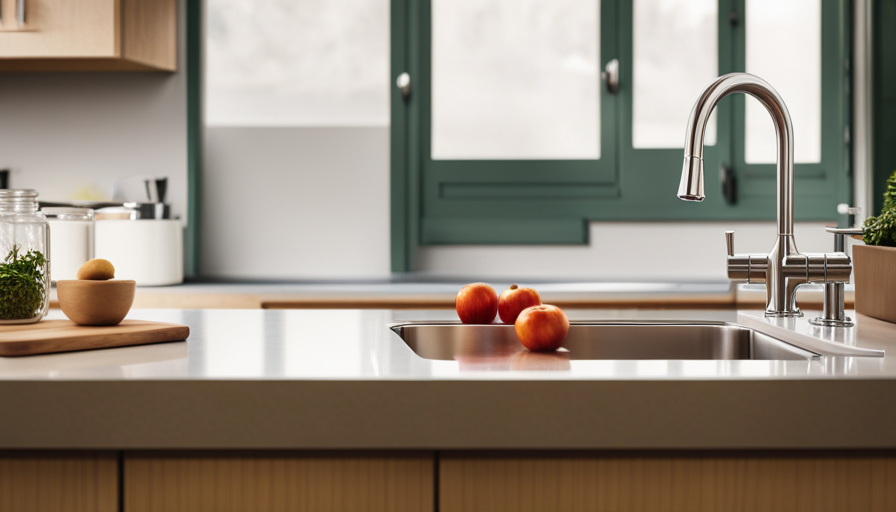
You may be curious, ‘How does one manage water in a tiny house?’ Given the constraints of space and resources, it might appear difficult to maintain a working water system. However, worry not, as we will explore the details of how to operate a water system in a tiny house in this article.
Now, you might be thinking, ‘Isn’t it difficult to find water sources for a tiny house?’ Well, rest assured, there are various options available. From connecting to a municipal water supply to utilizing rainwater harvesting systems, you have choices that can suit your needs and location.
But it’s not just about sourcing water; you also need to store and distribute it efficiently. We will explore different methods of water storage, such as tanks and containers, and discuss the importance of a well-designed distribution system to ensure a steady flow throughout your tiny house.
Heating water is another crucial aspect to consider. We will delve into different heating options, from traditional water heaters to innovative tankless systems, to help you find the most suitable solution for your tiny home.
And of course, we cannot overlook the importance of filtration and purification systems to ensure clean and safe water for everyday use. Additionally, we will touch upon composting toilets and greywater systems, which are eco-friendly alternatives for waste management in a tiny house.
So, if you’re ready to dive into the world of running water in a tiny house, let’s get started!
Key Takeaways
- Sourcing water in a tiny house can be challenging due to limited space and resources, but options such as municipal water supply and rainwater harvesting systems are available.
- Proper installation of water storage systems is important for security and weight handling in a tiny house.
- Efficient water distribution systems, such as gravity-fed systems, can provide a steady water flow in a tiny house.
- Different options for heating water in a tiny house include traditional water heaters, tankless systems, and solar water heaters, each with their own benefits.
Water Sources for Tiny Houses
You’ll be thrilled to discover the various water sources available for your tiny house! One option is rainwater harvesting, which involves collecting rainwater and storing it for later use. This can be done by installing a rainwater collection system, such as a roof gutter and downspout system, along with a storage tank. The collected rainwater can then be filtered and treated before being used for drinking, cooking, and cleaning.
Another option is to utilize water delivery services. These services involve having water delivered to your tiny house on a regular basis. This can be a convenient option if you don’t have access to a reliable water source or if you prefer not to rely on rainwater.
Once you have a water source, the next step is to store the water in your tiny house. This can be done by installing a water storage tank, which can be placed inside or outside your house depending on the available space. It’s important to choose a tank that is suitable for your needs and that can hold enough water for your daily usage.
With these water sources and storage options, you can ensure a steady supply of water for your tiny house. Transitioning into the subsequent section, let’s now explore how to efficiently use and manage water in your tiny house.
Storing Water in a Tiny House
When it comes to storing water in your tiny house, there are a few key points you need to consider.
First, you’ll need to choose the right water storage system that fits your space and needs. This could include options such as water tanks or containers specifically designed for tiny houses.
Once you have your storage system, you’ll then need to install it properly, ensuring it’s secure and can handle the weight of the water.
Finally, managing your water usage and conservation is crucial in a tiny house, as space and resources are limited. This may involve implementing water-saving techniques, such as low-flow fixtures and rainwater harvesting, to ensure you have enough water for your daily needs while minimizing waste.
Choosing the Right Water Storage System
To ensure a smooth flow of water in your tiny house, go for a water storage system that acts as a reliable oasis in the desert of limited space. When choosing the right water storage system for your tiny house, it is essential to consider factors such as water filtration and rainwater harvesting. These features can help you make the most of your limited space while ensuring a constant supply of clean water. To help you make an informed decision, here is a table outlining the pros and cons of different water storage systems:
| Water Storage System | Pros | Cons |
|---|---|---|
| Water Tanks | – Large storage capacity | – Requires installation |
| Bladder Tanks | – Flexible and compact | – Limited storage capacity |
| Under-Sink Tanks | – Space-saving | – Limited storage capacity |
By choosing the right water storage system, you can efficiently manage your water supply in a tiny house. Installing water tanks is the next crucial step in setting up your water system.
Installing Water Tanks
Get ready to set up your water system by installing the essential water tanks. When it comes to water pressure in a tiny house, it’s crucial to choose the right water tanks. Make sure to select tanks that can handle the desired water pressure for your needs.
Additionally, consider installing a water treatment system to ensure the water you use is clean and safe. There are various options available, such as filtration systems or UV disinfection, depending on your preferences and budget.
Once you have your water tanks and treatment system in place, you can move on to managing water usage and conservation. This includes implementing efficient fixtures, monitoring water consumption, and adopting water-saving habits.
With a well-designed water system and mindful usage, you can make the most of your limited water resources in your tiny house.
Managing Water Usage and Conservation
Once you’ve set up your water system with the right tanks and treatment system, it’s crucial to manage and conserve your water resources effectively. In a tiny house, every drop counts.
To maximize water usage, consider implementing water-saving tips such as installing low-flow fixtures, using aerators, and promptly repairing any leaks. Additionally, you can reduce your water consumption by practicing simple habits like taking shorter showers, turning off the tap while brushing your teeth, and using a dishwasher or washing machine only when they’re full.
Another great way to conserve water is through rainwater harvesting. Collecting rainwater can provide you with an alternative source of water for activities like watering plants or flushing toilets.
By implementing these strategies, you can minimize water waste and ensure a sustainable water supply for your tiny house.
Moving on to the next section about water distribution systems…
Water Distribution Systems
When it comes to water distribution systems in your tiny house, you have a few key options to consider.
One option is a gravity-fed system, where water flows naturally from a higher point to a lower point.
Another option is installing a water pump, which will provide consistent water pressure throughout your tiny house.
Additionally, you have various plumbing options to choose from, such as PEX or copper pipes, that’ll help you efficiently distribute water throughout your tiny house.
Gravity-Fed Systems
To ensure a steady flow of water in your tiny house, imagine a gentle stream gracefully cascading down from an elevated storage tank, powered solely by the force of gravity. This is the concept behind gravity-fed water systems, a popular choice for tiny house owners.
Gravity-fed systems work by utilizing the natural pressure created by the elevated tank to distribute water throughout the house. One of the key benefits of gravity-fed systems is their simplicity and reliability. They require minimal maintenance since there are no complex mechanical components involved. Additionally, they can save energy and reduce utility costs since they don’t rely on electricity or pumps.
However, it’s important to note that gravity-fed systems have some limitations, such as lower water pressure and the need for an elevated storage tank. To overcome these limitations, the next step is installing a water pump.
Installing a Water Pump
To ensure a reliable water source in your tiny house, it’s crucial to install a water pump. This device will provide the necessary water pressure to meet your daily needs. A water pump works by creating suction, drawing water from a source and then pushing it through the pipes. When installing a water pump, it’s important to consider its location, as it should be easily accessible for maintenance and repairs. Additionally, you should install a pressure gauge to monitor the water pressure and a pressure switch to automatically control the pump’s operation. Troubleshooting water pump issues may involve checking for clogs, leaks, or electrical malfunctions. Regular maintenance, such as cleaning the pump and replacing worn-out parts, will help ensure its optimal performance. With a properly installed water pump, you can have consistent water pressure in your tiny house. In the next section, we will explore the various plumbing options available for tiny houses.
Plumbing Options for Tiny Houses
If you’re looking for convenient options for plumbing in your cozy home, there are several choices available.
When it comes to water filtration options for your tiny house, you can consider installing a whole house water filter system. This system will help remove impurities and ensure that the water you use is clean and safe.
Additionally, you may want to install a water pressure regulation system to control the water pressure in your tiny house. This will prevent any damage to your plumbing system and appliances due to high water pressure. By regulating the water pressure, you can also ensure a consistent flow of water throughout your tiny house.
Now, let’s move on to the next section and discuss heating water in a tiny house.
Heating Water in a Tiny House
When you’re ready to turn up the heat in your tiny house, just imagine a stream of warm water flowing effortlessly from your faucet. Achieving this level of comfort requires careful consideration of heating options and energy efficiency.
Here are three key factors to keep in mind:
-
Tankless Water Heaters: These compact units are perfect for tiny houses as they don’t require a large storage tank. Instead, they heat water on demand as it flows through the unit. This not only saves space but also minimizes energy waste by eliminating the need to constantly heat a large volume of water.
-
Solar Water Heaters: Harnessing the power of the sun, these systems use solar panels to heat water. They’re highly efficient and environmentally friendly, reducing reliance on non-renewable energy sources. Installing solar water heaters on the roof of your tiny house allows for maximum exposure to sunlight.
-
Propane Water Heaters: Propane is a popular choice for heating water in tiny houses due to its high energy density and portability. Propane water heaters offer instant hot water and are often more energy-efficient than electric models.
When it comes to heating water in your tiny house, considering these options will help you find the perfect solution that balances energy efficiency and convenience.
Now, let’s explore the next section about filtration and purification systems.
Filtration and Purification Systems
Solar water heaters and tankless water heaters are efficient and space-saving options for heating water in a tiny house, but what about filtration and purification systems? When it comes to ensuring clean and safe water, there are various filtration techniques and water treatment methods available.
One popular filtration technique is activated carbon filtration. This method uses activated carbon to remove impurities, such as chlorine, volatile organic compounds, and sediment, from the water. It works by adsorbing these contaminants onto its surface, leaving the water clean and odor-free.
Another effective water treatment method is reverse osmosis. This process uses a semipermeable membrane to remove dissolved solids, such as salts and minerals, from the water. It works by applying pressure to the water, forcing it through the membrane and leaving behind the impurities.
UV sterilization is also a commonly used method in tiny house water systems. It utilizes ultraviolet light to kill bacteria, viruses, and other microorganisms present in the water. The UV light disrupts their DNA, rendering them unable to reproduce and causing them to die off.
Transitioning into the subsequent section about composting toilets and greywater systems, it is important to consider not only the water we use but also how we manage waste in a tiny house.
Composting Toilets and Greywater Systems
Composting toilets and greywater systems are essential for managing waste in a tiny house, with over 90% of households in the United States using traditional flush toilets contributing to water pollution. By implementing composting toilet alternatives and eco-friendly greywater disposal methods, you can reduce your environmental impact while still maintaining a hygienic living space.
Composting toilets are a sustainable option for tiny houses, as they convert human waste into nutrient-rich compost. These toilets separate solid and liquid waste, allowing for faster decomposition and odor control. The resulting compost can be used as fertilizer for plants, closing the nutrient loop and minimizing waste.
When it comes to greywater disposal, eco-friendly systems are designed to reuse or safely dispose of household wastewater. Greywater, which includes water from sinks, showers, and laundry, can be filtered and treated to remove contaminants before being used for irrigation or flushing toilets. This reduces the strain on freshwater resources and decreases the amount of wastewater entering septic systems or sewage treatment plants.
To provide a visual representation, here is a table showcasing the benefits of composting toilets and eco-friendly greywater systems:
| Composting Toilets | Eco-Friendly Greywater Systems |
|---|---|
| Converts waste into compost | Filters and treats wastewater |
| Odor control | Reduces strain on freshwater resources |
| Nutrient-rich compost for plants | Decreases wastewater entering septic systems |
| Sustainable waste management | Minimizes water pollution |
By incorporating composting toilets and eco-friendly greywater systems, you can effectively manage waste in your tiny house while promoting a more sustainable and environmentally friendly lifestyle.
Frequently Asked Questions
How do I choose the best water heater for a tiny house?
When choosing a water heater for your tiny house, consider the advantages of tankless options. Both electric and gas tankless water heaters are compact and energy-efficient, making them ideal for small spaces.
Additionally, solar water heaters are a sustainable choice, utilizing the sun’s energy to heat your water. Propane water heaters are another option, providing reliable hot water in off-grid locations.
Compare the features and benefits of each type to find the best water heater for your specific needs.
Can I use rainwater as my primary water source in a tiny house?
When it comes to using rainwater as your primary water source in a tiny house, it’s like hitting two birds with one stone. Not only does it help you save on your water bills, but it also promotes sustainability.
To ensure the rainwater is safe for use, you’ll need a rainwater filtration system that removes impurities. Additionally, implementing water conservation techniques such as low-flow fixtures and greywater recycling can further optimize your water usage in a tiny house.
What are the pros and cons of using a composting toilet in a tiny house?
Using a composting toilet in a tiny house offers several pros and cons. On the positive side, it promotes environmental sustainability by reducing water usage and eliminating the need for a traditional sewage system. Additionally, maintenance is relatively easy, involving regular emptying and occasional monitoring of the composting process.
However, odor control can be a challenge, requiring proper ventilation and the use of odor-neutralizing agents. Overall, a composting toilet is a viable option for those seeking a sustainable and low-maintenance solution.
How can I ensure the water in my tiny house is safe to drink?
To ensure the water in your tiny house is safe to drink, there are a few options for water filtration. You can install a point-of-use filter, such as a carbon filter, to remove impurities.
Another option is a UV sterilizer, which kills bacteria and viruses.
Additionally, regularly testing the water quality is crucial. Use a water testing kit or send samples to a lab to check for contaminants like heavy metals or bacteria.
Are there any regulations or building codes I need to consider when installing a greywater system in a tiny house?
When installing a greywater system in a tiny house, it’s crucial to consider regulations and building codes. These regulations ensure that your system meets safety standards and protects the environment. It’s important to research and comply with local regulations regarding greywater disposal, plumbing, and wastewater treatment.
Building codes may require specific installation methods and materials to ensure the system is properly constructed and maintained. Following these regulations and codes will help ensure the safe and efficient operation of your greywater system.
Conclusion
Congratulations! Now you know all the ins and outs of running water in a tiny house. From sourcing water to storing it, distributing and heating it, and even purifying it, you’ve got it covered. And let’s not forget about composting toilets and greywater systems – because who doesn’t love a little eco-friendly waste management?
So go forth, tiny homeowners, and conquer the world with your efficient and sustainable water systems. Cheers to a life of convenience in your not-so-tiny tiny house!
Hi, I’m Emma. I’m the Editor in Chief of Tiny House 43, a blog all about tiny houses. While tree houses are often associated with childhood, they can be the perfect adult retreat. They offer a cozy space to relax and unwind, surrounded by nature. And since they’re typically built on stilts or raised platforms, they offer stunning views that traditional homes simply can’t match. If you’re looking for a unique and romantic getaway, a tree house tiny house might just be the perfect option.
Beginners Guides
How Do I Get Rid of Tiny Flies in My House
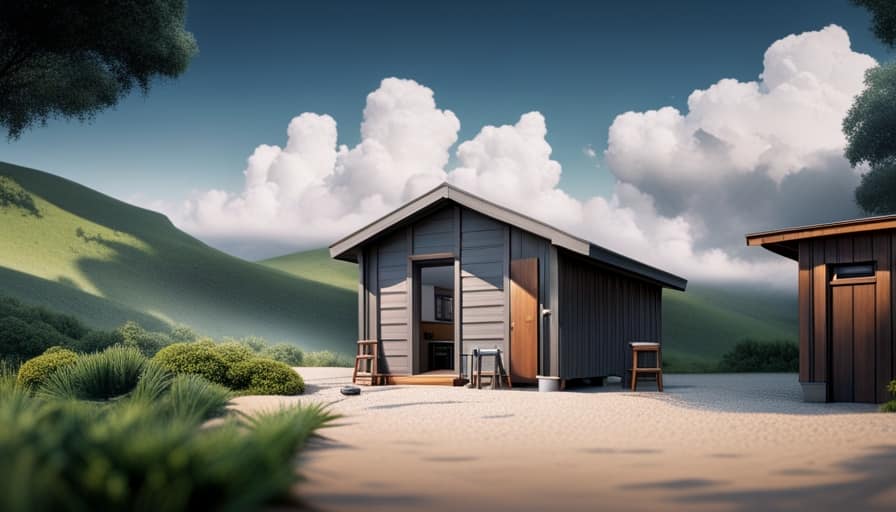
Recently, I have been bothered by these annoying little flies in my home, and I must say, they are really starting to get on my nerves!
But fear not, because I’ve done my research and I’m here to share some expert tips on how to get rid of those tiny flies once and for all.
From identifying the different types of flies to using natural remedies and chemical solutions, I’ve got you covered.
So let’s dive in and bid farewell to these unwanted guests together!
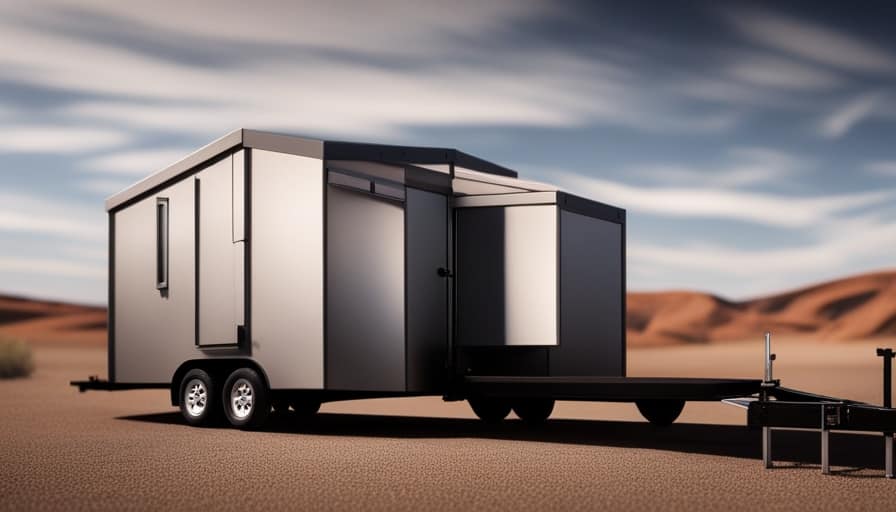
Key Takeaways
- Identifying the common types of tiny flies in your house is important for effective pest control.
- Tiny flies are attracted to moist and decaying organic matter, such as overripe fruits and rotting vegetables.
- Natural remedies, such as vinegar and dish soap solutions, can be used to eliminate tiny flies from your house.
- Preventing future infestations of tiny flies involves maintaining a clean environment, sealing cracks or openings, and storing perishable items properly.
Identifying the Common Types of Tiny Flies in Your House
I can easily identify the common types of tiny flies in my house by observing their physical characteristics and behavior. Flies are attracted to our homes for various reasons, including the presence of food, moisture, and waste. It’s important to note that these flies can pose health risks, as they can carry and spread disease-causing organisms.
To identify the types of flies, I first look at their size and color. For instance, fruit flies are small and have a tan or brown color. Drain flies, on the other hand, are gray or black and have a fuzzy appearance.
Understanding the Reasons Why Tiny Flies Infest Your Home
To understand why tiny flies infest your home, it’s important to consider their attraction to certain conditions and factors within your living space.
These flies, commonly known as fruit flies or drain flies, are attracted to moist and decaying organic matter. They seek out common breeding grounds such as overripe fruits, rotting vegetables, and damp areas in your kitchen or bathroom.
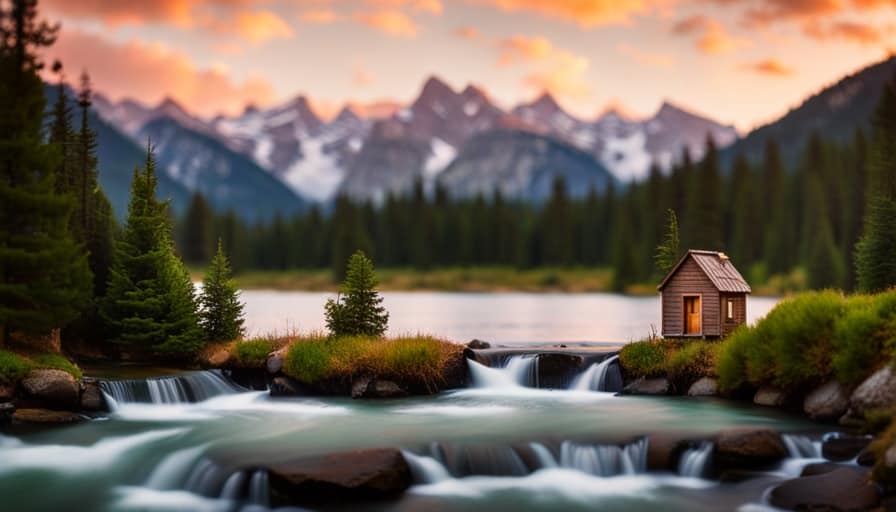
These tiny flies are also drawn to standing water in sinks, drains, and garbage disposals. Signs of a fly infestation include the presence of numerous flies hovering around these areas, as well as the sighting of their larvae or pupae.
It’s crucial to address these conditions and remove any potential breeding grounds to effectively eliminate the infestation and prevent future occurrences.
Natural Remedies to Eliminate Tiny Flies From Your House
One effective way to eliminate tiny flies from your house is by using a combination of vinegar and dish soap. This homemade vinegar fly spray is a non-toxic and practical solution to get rid of those pesky insects.
Here’s how you can make it:
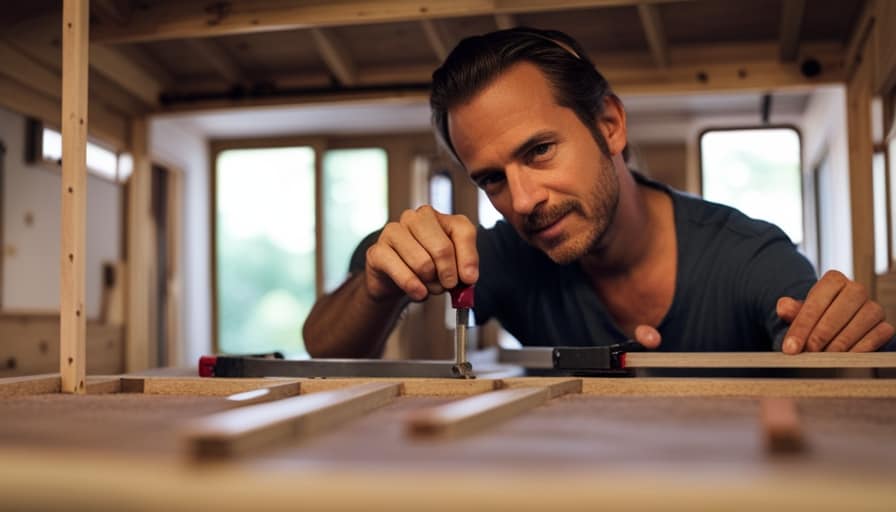
- Mix equal parts of vinegar and water in a spray bottle.
- Add a few drops of dish soap to the mixture. The soap helps to break the surface tension of the liquid, making it easier for the flies to drown.
- Shake the bottle gently to ensure the ingredients are well combined.
- Spray the solution directly onto the flies or in areas where they’re commonly found, such as near windows or fruit bowls.
This natural fly spray isn’t only effective but also safe for your family and pets. It traps and kills the flies without the use of harmful chemicals.
Give it a try and say goodbye to those tiny flies in your house!
Using Chemical Solutions to Get Rid of Tiny Flies in Your Home
Bleach is a strong and effective chemical solution that can help eliminate tiny flies in your home. Chemical solutions, such as bleach, can be highly effective in eliminating tiny flies. The strong properties of bleach make it a powerful tool for killing flies and destroying their breeding grounds. However, it’s important to use caution when using chemical solutions, as they can be harmful to humans and pets if not used properly.
When comparing chemical solutions to natural remedies for getting rid of tiny flies in your house, it’s important to consider their effectiveness.
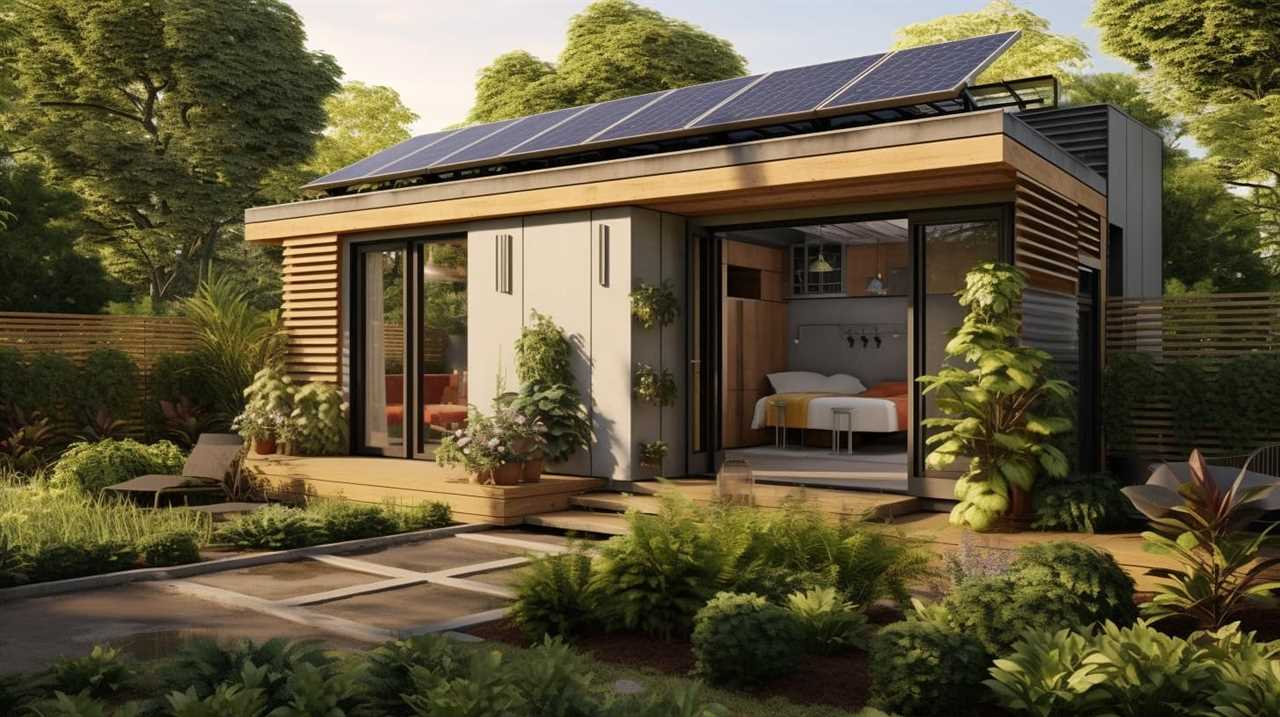
In the next section, we’ll discuss methods for preventing future infestations of tiny flies in your house.
Preventing Future Infestations of Tiny Flies in Your House
I can take steps to prevent future infestations of tiny flies in my house by implementing proper sanitation practices. By maintaining a clean environment, I can greatly reduce the chances of reinfestation. Here are three key practices to incorporate:
-
Regularly clean and sanitize all areas of the house, especially the kitchen and garbage disposal areas. Empty and clean trash cans frequently to prevent any organic matter from attracting flies.
-
Seal any cracks or openings in doors, windows, and screens to prevent flies from entering the house. Repair any damaged screens to ensure they’re intact and functioning properly.
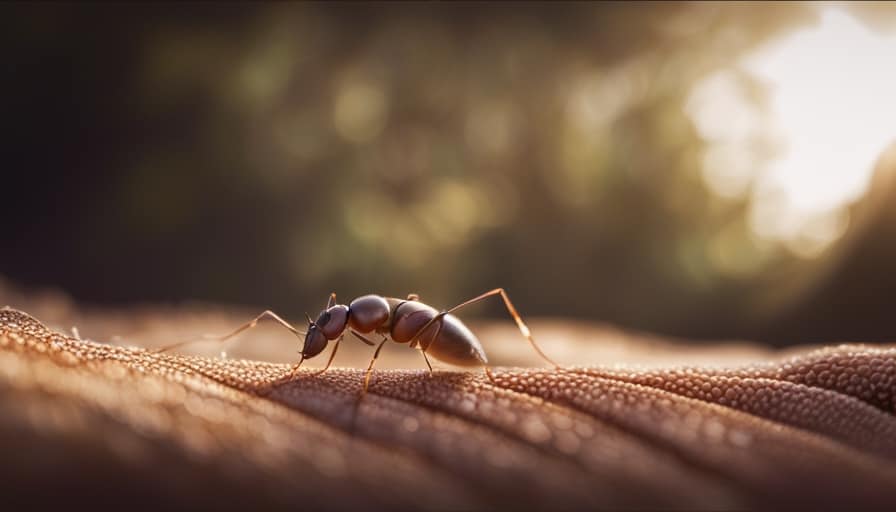
-
Store fruits, vegetables, and other perishable items in sealed containers or in the refrigerator. Flies are attracted to the odors of decaying food, so keeping it properly stored will deter them.
Frequently Asked Questions
How Do Tiny Flies Affect My Health?
Tiny flies can pose health risks, as they can carry bacteria and pathogens that can cause illnesses. To avoid health issues, it’s important to keep your house clean, dispose of trash properly, and eliminate any standing water where they can breed.
Can Tiny Flies Damage My Property?
Tiny flies can indeed cause damage to your property. Their larvae can infest and feed on organic materials, such as wood, causing structural damage over time. It’s important to address the issue promptly to prevent further harm.
Are Tiny Flies Attracted to Specific Food Sources?
Tiny flies are often attracted to specific food sources, such as overripe fruits or decaying organic matter. Understanding their breeding habits and implementing effective prevention methods, like proper sanitation and sealing entry points, can help keep them out of the house.
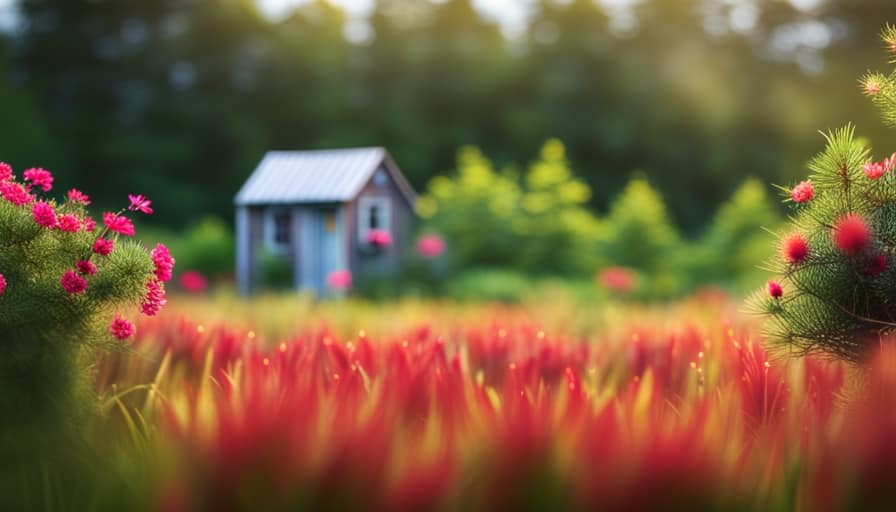
How Long Does It Take for Natural Remedies to Eliminate Tiny Flies?
In my experience, the speed of effectiveness of natural remedies versus chemical solutions for eliminating tiny flies can vary. While some natural remedies may work quickly, others may take longer to fully eliminate the flies. It’s important to be patient and consistent in your efforts.
Are There Any Long-Term Effects of Using Chemical Solutions to Get Rid of Tiny Flies?
Using chemical solutions to eliminate tiny flies in your house can have long-term environmental impacts. Consider using alternative methods like natural remedies or traps that are safer and more sustainable for the ecosystem.
Conclusion
In conclusion, it’s evident that tiny flies can be a nuisance in our homes. By understanding their types and reasons for infestation, we can effectively eliminate them using natural remedies or chemical solutions.
However, it’s crucial to prevent future infestations by maintaining cleanliness and proper waste management. Rest assured, with the right knowledge and approach, you can bid farewell to these pesky insects and enjoy a fly-free home environment.
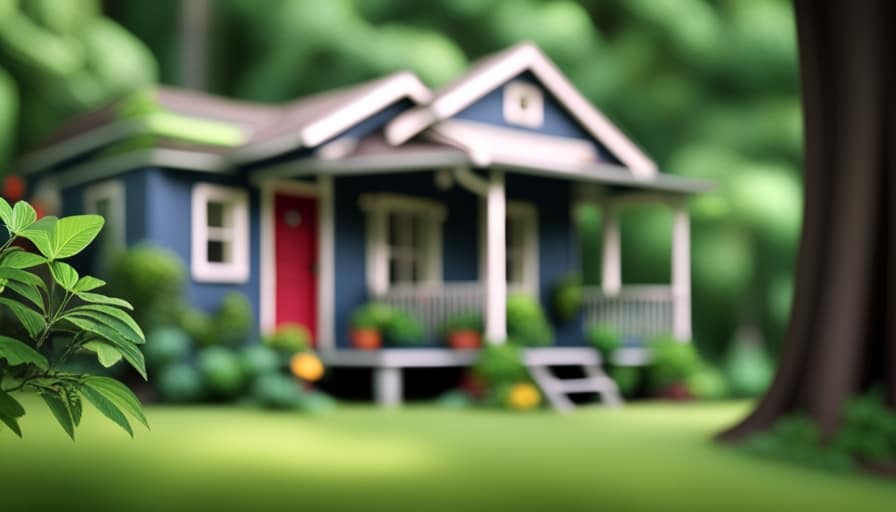
I’m Theodore, and I love tiny houses. In fact, I’m the author of Tiny House 43, a book about tiny houses that are also tree houses. I think they’re magical places where imaginations can run wild and adventures are just waiting to happen.
While tree houses are often associated with childhood, they can be the perfect adult retreat. They offer a cozy space to relax and unwind, surrounded by nature. And since they’re typically built on stilts or raised platforms, they offer stunning views that traditional homes simply can’t match.
If you’re looking for a unique and romantic getaway, a tree house tiny house might just be the perfect option.
Beginners Guides
How Do I Get Rid of Tiny Ants in My House

- Health risks: Are there any potential diseases that can be transmitted by ants in the house?
- Prevention methods: What are some effective ways to keep ants out of the house to avoid any health risks?
I have been dealing with these stubborn small ants in my home, and I’m sure you can empathize. It seems like I am stuck in an endless game of hide-and-seek with these little creatures.
But fear not, because I’ve done my research and I’m here to share some tried and true methods to get rid of them for good. From natural remedies to chemical solutions, I’ve got you covered.
So let’s roll up our sleeves and say goodbye to those pesky ants together!
Key Takeaways
- Identifying the type of ants in your house is important in order to effectively address the infestation issue.
- Understanding the behavior and nesting habits of tiny ants is essential in finding and eliminating their colonies.
- Natural remedies such as vinegar and water solution, essential oils, and cinnamon can help repel and eliminate tiny ants.
- If natural remedies don’t work, consider using chemical solutions or seeking professional pest control services for a safer and more comprehensive approach.
Identifying the Type of Ants in Your House
I personally find it helpful to identify the type of ants in my house by observing their behavior and physical features. Distinguishing characteristics play a crucial role in determining the species of ants present.

Some common types of household ants include pavement ants, odorous house ants, and pharaoh ants. Pavement ants are dark brown or black with parallel grooves on their heads and thoraxes. Odorous house ants emit a distinct odor when crushed, often described as a rotten coconut smell. Pharaoh ants are light yellow to reddish-brown and have two distinct nodes on their petioles.
In terms of common habitats, ants can be found in various areas of the house, including kitchens, bathrooms, and around food sources. Understanding the behavior and nesting habits of tiny ants is essential in effectively addressing the infestation issue.
Understanding the Behavior and Nesting Habits of Tiny Ants
There are several key factors to consider when understanding the behavior and nesting habits of tiny ants in your house.
These tiny creatures are social insects, living in colonies that can range from a few dozen to thousands of individuals. They communicate and cooperate through chemical signals and pheromones, which helps them locate food sources and establish trails.

When it comes to nesting, tiny ants can build their colonies in various locations, such as in wall voids, under floors, or even in potted plants. Understanding their nesting habits is crucial in effectively eliminating them from your house.
It’s important to note that while ants can be a nuisance indoors, they play a vital role in the ecosystem, helping to decompose organic matter and control other insect populations. However, their presence in food storage areas can contaminate and spoil food, making it necessary to address their infestation promptly and safely.
Natural Remedies to Get Rid of Tiny Ants in Your House
One effective natural remedy to eliminate tiny ants in your house is using a vinegar and water solution. Vinegar, with its strong odor, disrupts their scent trails and confuses them, making it difficult for them to navigate. To create the solution, mix equal parts of white vinegar and water in a spray bottle. Then, simply spray the solution directly onto the ants or their entry points.
Another natural remedy is using essential oils, such as peppermint, lemon, or tea tree oil. These oils have strong scents that repel ants. Mix a few drops of your chosen essential oil with water and spray it in areas where ants are present.
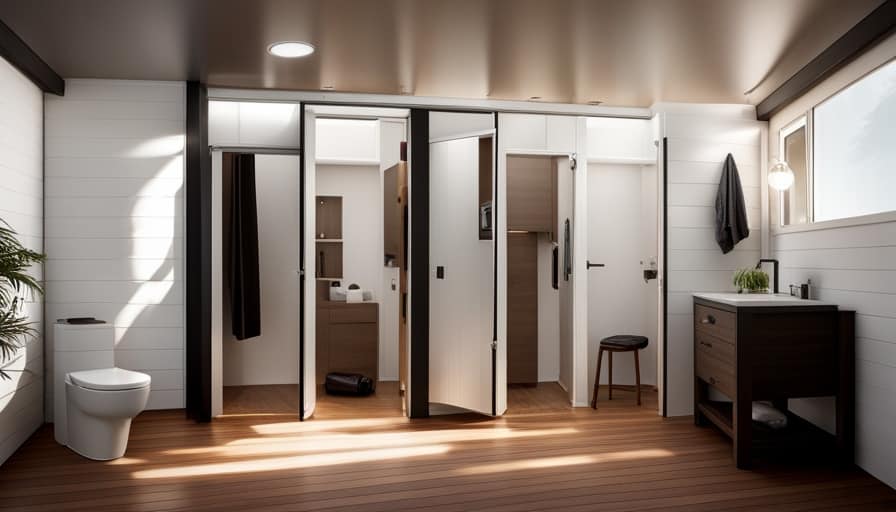
These natural remedies provide an eco-friendly and safe way to get rid of tiny ants in your house. However, if these methods don’t work, it may be necessary to consider chemical solutions for eliminating tiny ants.
Chemical Solutions for Eliminating Tiny Ants
If you’re dealing with a persistent infestation of tiny ants in your house, using insecticide sprays can be an effective solution to eliminate them. However, it is important to consider non-toxic alternatives and professional pest control services for a safer and more comprehensive approach.
| Chemical Solution | How it Works | Pros | Cons |
|---|---|---|---|
| Insecticide sprays | Kills ants on contact | – Easy to use – Widely available – Immediate results |
– Chemical exposure – Harmful to pets and children – Potential environmental impact |
While insecticide sprays can quickly kill ants, they may pose risks to your health and the environment. If you prefer non-toxic alternatives, consider using natural repellents like vinegar, lemon juice, or essential oils. These substances are less harmful and can help deter ants from entering your home.
Another option is to hire professional pest control services. They have the expertise and specialized equipment to effectively eliminate ant infestations. Professionals can also assess the extent of the problem and provide long-term solutions to prevent future infestations.
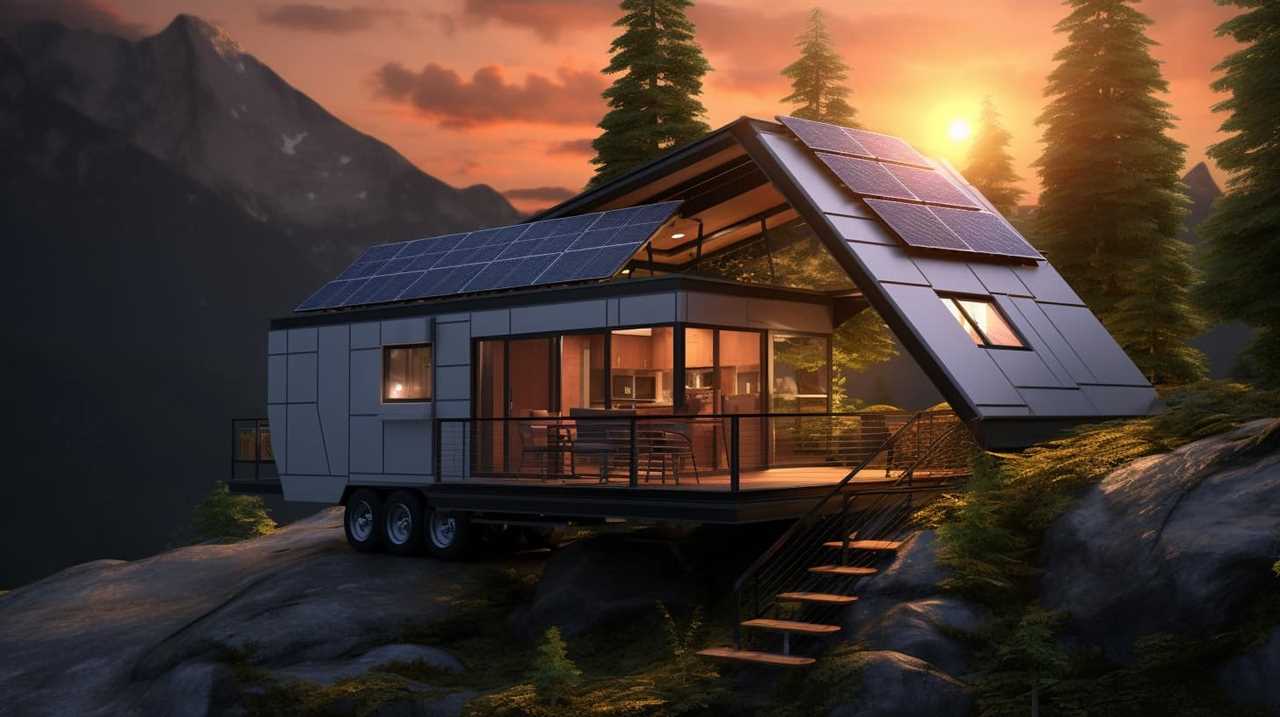
Preventing Future Infestations: Tips and Tricks
When I encountered a persistent infestation of tiny ants in my house, I took proactive steps to prevent future infestations. Here are some effective ant proofing techniques for your home and long-term strategies for keeping ants out:
-
Seal cracks and crevices: Inspect your house for any openings where ants can enter, such as gaps around doors, windows, and pipes. Use caulk or weatherstripping to seal these entry points.
-
Keep your house clean: Clean up food and drink spills promptly, and store food in airtight containers. Wipe down countertops and sweep floors regularly to remove any crumbs or residue that may attract ants.
-
Remove potential ant habitats: Trim back vegetation that’s in contact with your house, as ants can use it as a bridge to enter. Also, keep firewood and other outdoor items away from the foundation.
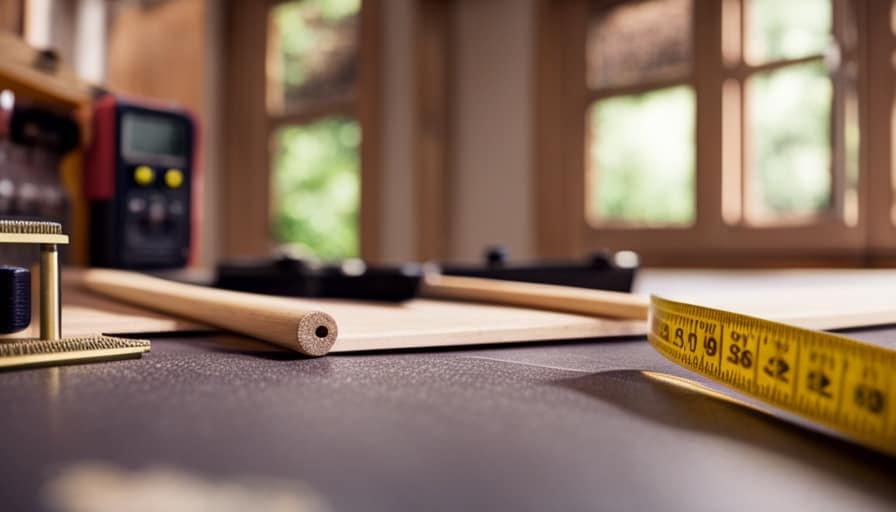
-
Use natural deterrents: Certain scents like peppermint, cinnamon, and vinegar can repel ants. Spray these substances around entry points or wipe down surfaces to discourage ants from entering.
Frequently Asked Questions
How Do I Get Rid of Ants in My Garden?
To get rid of ants in my garden, I use organic pest control methods and natural ant repellents. These methods are effective in keeping ants away and maintaining a healthy garden environment.
Can I Use Vinegar to Kill Ants?
Yes, vinegar can be used to kill ants. However, there are also other natural ant repellents that you can consider using as alternatives to vinegar.
What Should I Do if I Have a Severe Ant Infestation?
If I have a severe ant infestation, I would first focus on prevention tips such as sealing entry points and removing food sources. If the problem persists, I would consider professional ant extermination options for effective and long-lasting results.

Are There Any Health Risks Associated With Ants in the House?
There are potential health risks associated with ants in the house. They can contaminate food, spread bacteria, and even cause allergies. It’s important to take preventive measures to avoid these risks.
Can I Use Essential Oils to Repel Ants?
I find that using essential oils for ant control can be effective. However, it’s important to consider the pros and cons of natural ant repellents. While they are safe and eco-friendly, they may not be as potent as chemical options.
Conclusion
In conclusion, by identifying the type of ants in your house, understanding their behaviors and nesting habits, and implementing natural or chemical remedies, you can effectively get rid of tiny ants.
However, prevention is key to avoiding future infestations. Just as a fortress protects its kingdom from invaders, taking proactive measures will safeguard your home from these pesky pests.
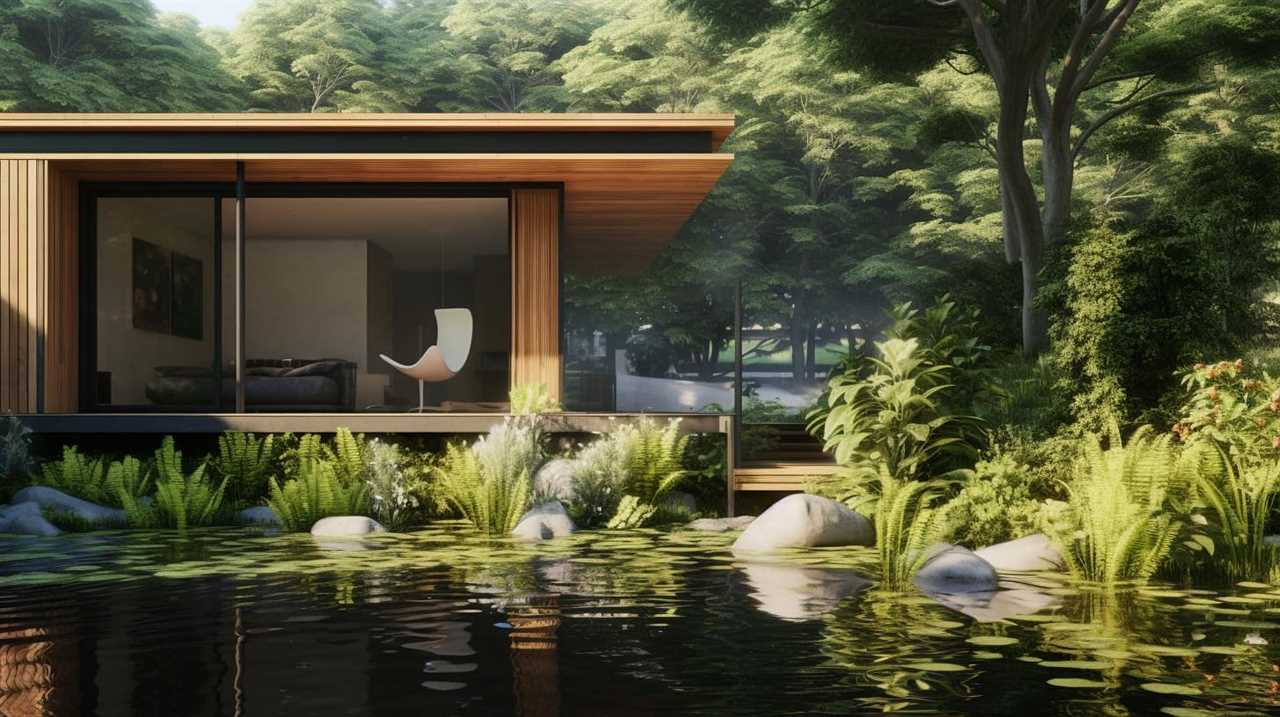
Stay vigilant and maintain cleanliness to ensure a ant-free environment.
I’m Theodore, and I love tiny houses. In fact, I’m the author of Tiny House 43, a book about tiny houses that are also tree houses. I think they’re magical places where imaginations can run wild and adventures are just waiting to happen.
While tree houses are often associated with childhood, they can be the perfect adult retreat. They offer a cozy space to relax and unwind, surrounded by nature. And since they’re typically built on stilts or raised platforms, they offer stunning views that traditional homes simply can’t match.
If you’re looking for a unique and romantic getaway, a tree house tiny house might just be the perfect option.
Beginners Guides
How Cheap Can You Build a Tiny House

Constructing a small house is akin to figuring out a puzzle – it can be difficult, but the payoff is valuable. As someone who enjoys discovering inventive answers, I sympathize with the longing to create a gorgeous home without breaking the bank.
In this article, we’ll explore the factors that affect the cost of building a tiny house and discover budget-friendly materials and labor-saving strategies. Join me on this journey to uncover just how cheap you can build your dream tiny house.
Key Takeaways
- Choosing the right location in a rural area with lower land prices and fewer building restrictions can significantly affect the cost of building a tiny house.
- Using alternative building methods such as reclaimed materials or repurposed items can help reduce costs.
- Implementing cost-saving techniques and building on a budget are important factors in building a cheap tiny house.
- Utilizing budget-friendly building materials, such as affordable insulation options and low-cost flooring alternatives, can also contribute to building a cheap tiny house.
Factors Affecting the Cost of Building a Tiny House
What are the factors that affect the cost of building a tiny house?
When it comes to building a tiny house on a budget, there are several cost-saving techniques and alternative building methods that can significantly impact the overall cost.
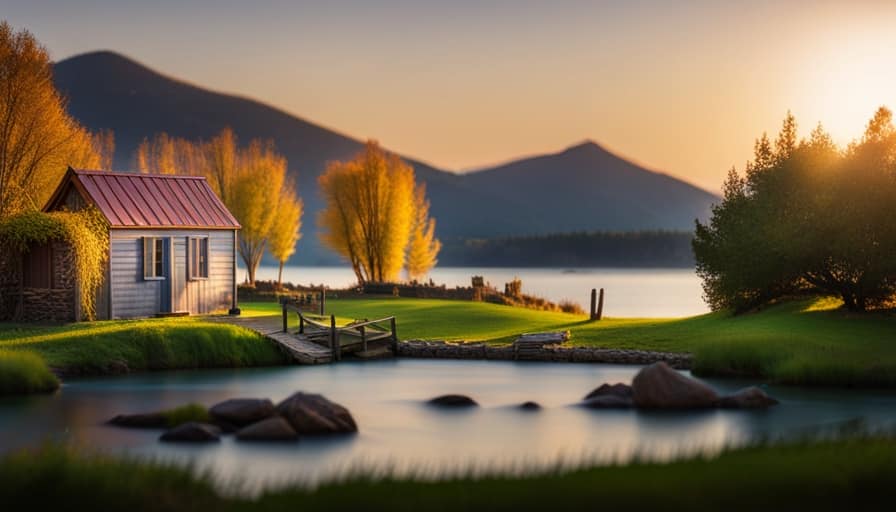
One of the main cost-saving techniques is choosing the right location. Building in a rural area with lower land prices and fewer building restrictions can help keep costs down.
Another factor that affects the cost is the size and design of the tiny house. The simpler the design, the more cost-effective it will be.
Additionally, using alternative building methods such as reclaimed materials or repurposed items can also help reduce costs.
By considering these factors and implementing cost-saving techniques, it’s possible to build a tiny house on a budget.
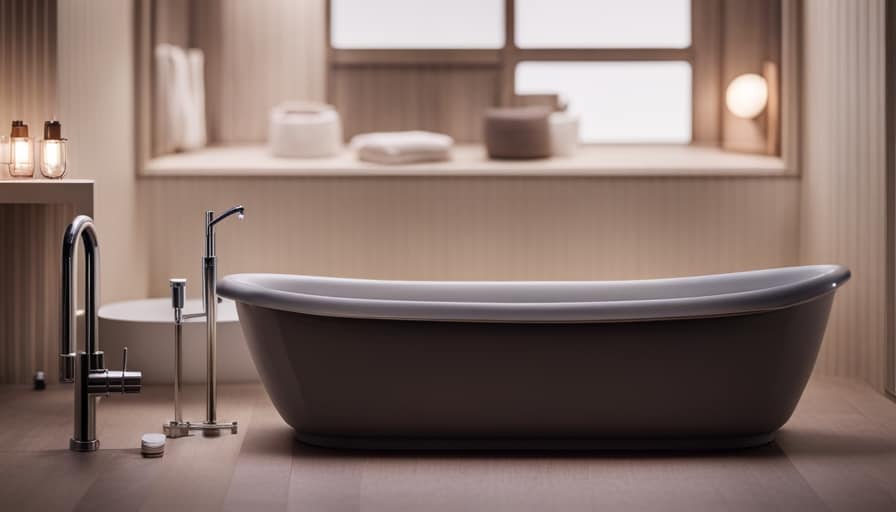
Transitioning into the subsequent section about budget-friendly tiny house building materials, let’s explore how the choice of materials can further impact the overall cost.
Budget-Friendly Tiny House Building Materials
When it comes to building a tiny house on a budget, I can find affordable building materials that will help keep costs down. One area where I can save money is by choosing affordable insulation options. Instead of expensive spray foam insulation, I can opt for alternatives such as fiberglass batts or rigid foam boards. These options are cost-effective and still provide good insulation for the tiny house. Additionally, I can consider low-cost flooring alternatives to save money. Instead of hardwood or tile, I can use vinyl plank flooring or laminate flooring, which are both affordable and durable. By making smart choices when it comes to insulation and flooring, I can build a budget-friendly tiny house without compromising on quality.
| Affordable Insulation Options | Low Cost Flooring Alternatives |
|---|---|
| Fiberglass batts | Vinyl plank flooring |
| Rigid foam boards | Laminate flooring |
Strategies for Saving Money on Tiny House Design
To save money on my tiny house design, I can employ cost-saving strategies such as utilizing multipurpose furniture and maximizing storage space. By incorporating cost-effective design options and implementing DIY tiny house building techniques, I can create a functional and affordable living space.
One key strategy is to choose furniture that serves multiple purposes, such as a sofa that can be converted into a bed or a dining table that can be folded away when not in use. This not only saves money on buying separate pieces of furniture but also maximizes the use of limited space.
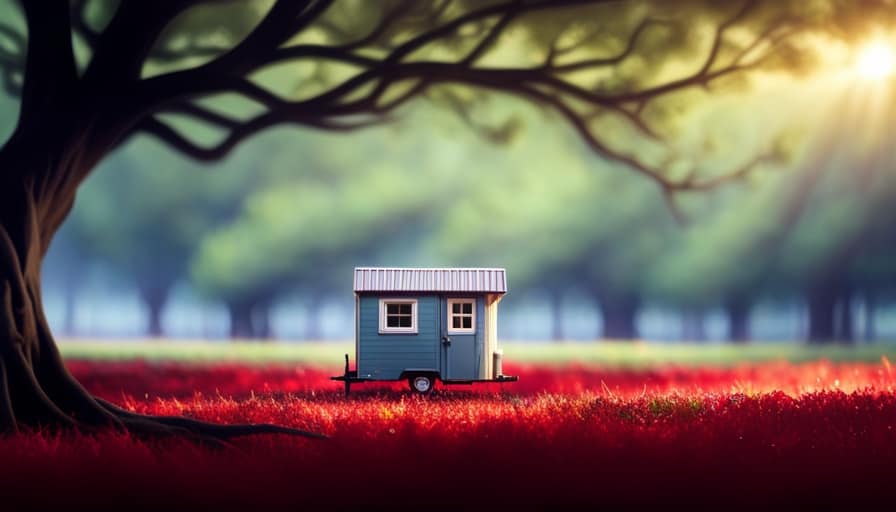
Another cost-saving strategy is to maximize storage space by utilizing built-in shelving, under-bed storage, and wall-mounted organizers. This eliminates the need for additional storage furniture and keeps the space clutter-free.
Creative Ways to Reduce Labor Costs in Tiny House Construction
I can significantly reduce labor costs in tiny house construction by hiring a small team of skilled workers instead of a large crew. This approach allows for effective coordination and streamlined communication, resulting in increased efficiency and reduced labor hours.
Here are some creative ways to further reduce labor costs in tiny house construction:
-
Utilize DIY construction techniques: Encourage the use of DIY construction techniques, where homeowners can actively participate in the building process. This not only reduces labor costs but also creates a sense of ownership and satisfaction.
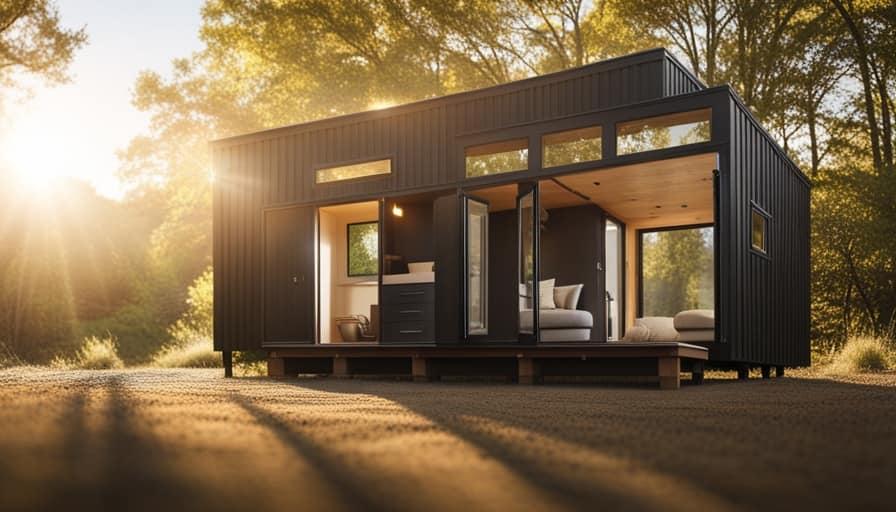
-
Incorporate alternative energy sources: Explore the use of alternative energy sources such as solar panels or wind turbines. By integrating these systems during the construction phase, you can avoid additional labor costs associated with retrofitting.
-
Optimize material usage: Carefully plan and optimize the use of materials to minimize waste. This can be achieved by accurately measuring and cutting materials, as well as repurposing leftover materials for other parts of the project.
-
Prioritize efficient design: Focus on designing a space that maximizes functionality and minimizes unnecessary labor-intensive features. This includes thoughtful space planning, utilizing multipurpose furniture, and incorporating efficient storage solutions.
Implementing these strategies won’t only help reduce labor costs but also contribute to a sustainable and budget-friendly tiny house construction process.
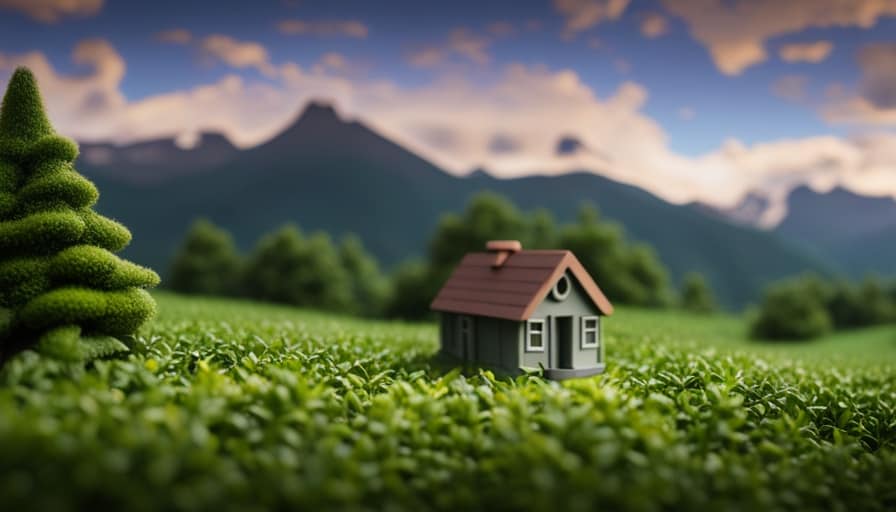
Tips for Finding Affordable Land for Your Tiny House
By researching online listings and networking with local real estate agents, I can easily find affordable land for my tiny house. It is important to explore alternative financing options for purchasing land for a tiny house to keep costs low. One option is owner financing, where the seller acts as the lender and allows you to make monthly payments instead of obtaining a traditional mortgage. Another option is crowdfunding, where you can raise funds from a community of supporters who believe in your tiny house project. Additionally, negotiating with local municipalities for reduced fees and regulations for tiny house living can save you money in the long run. Some municipalities may be open to creating special zoning or permitting regulations for tiny houses, making it easier and more affordable to live in them.
| Financing Options | Benefits |
|---|---|
| Owner Financing | Lower interest rates, flexible payment terms |
| Crowdfunding | Community support, no need for traditional loans |
| Negotiating with Local Municipalities | Reduced fees, simplified regulations |
Finding affordable land for your tiny house is a crucial step in building your dream home while staying within your budget. With the right research, networking, and negotiation skills, you can make your tiny house dreams a reality.
Frequently Asked Questions
What Are the Most Common Mistakes to Avoid When Building a Tiny House on a Tight Budget?
Common pitfalls to avoid when building a tiny house on a tight budget include overestimating DIY skills, not researching local codes and regulations, and not budgeting for unexpected expenses. Cost saving tips include using reclaimed materials and prioritizing essential features.
Are There Any Financing Options Available for Building a Tiny House?
Financing options for building a tiny house include personal loans, RV loans, and construction loans. Pros include flexibility, ownership, and the opportunity to live mortgage-free. Cons may include higher interest rates and stricter qualification requirements.
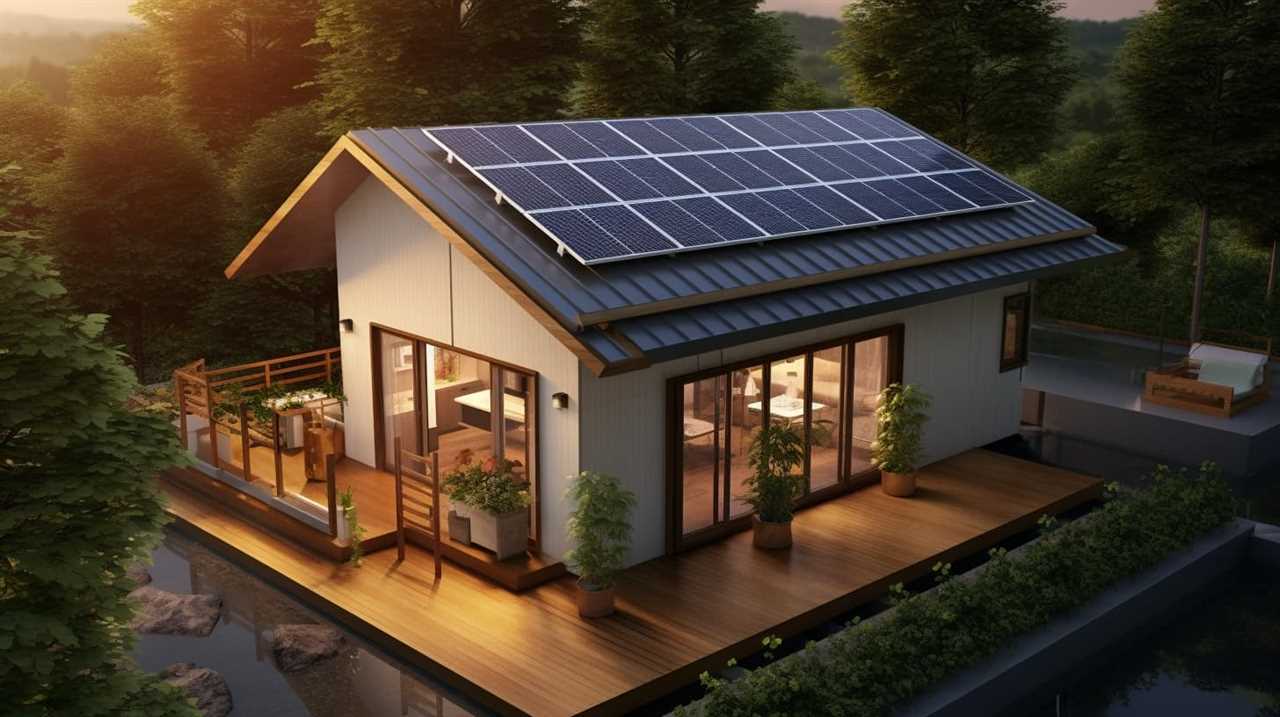
How Much Does It Cost to Maintain a Tiny House on a Yearly Basis?
Maintaining a tiny house on a yearly basis can be cost-effective. By embracing the benefits of living in a tiny house vs. a traditional home and following tips for minimizing maintenance costs, I can save money and enjoy a simpler lifestyle.
Can You Build a Tiny House Using Recycled or Salvaged Materials?
Using recycled and salvaged materials for a tiny house not only saves money, but also gives a sense of purpose and accomplishment. It’s a creative way to build sustainably and reduce waste while creating a unique and personalized home.
Are There Any Legal Restrictions or Regulations to Consider When Finding Land for a Tiny House?
When finding land for a tiny house, it’s important to consider legal restrictions and zoning regulations. Land requirements vary, and financing options may be limited. Maintenance costs can be lower, and eco-friendly building materials are often used.
Conclusion
In conclusion, building a tiny house can be an affordable and cost-effective option for those looking to downsize or live a more minimalist lifestyle. By considering factors such as materials, design strategies, and labor costs, it’s possible to build a tiny house on a tight budget.
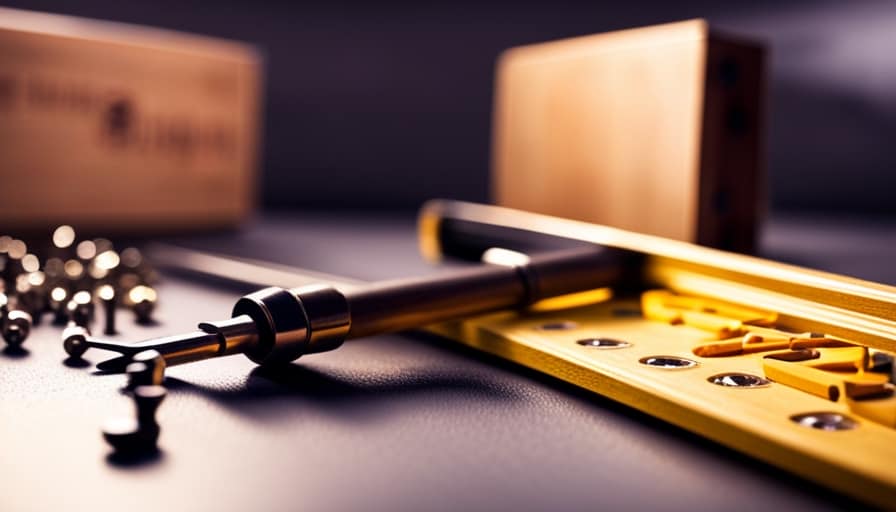
With a little creativity and resourcefulness, you can achieve your dream of owning a tiny house without breaking the bank. So why wait? Start planning and building your own tiny house today!
I’m Theodore, and I love tiny houses. In fact, I’m the author of Tiny House 43, a book about tiny houses that are also tree houses. I think they’re magical places where imaginations can run wild and adventures are just waiting to happen.
While tree houses are often associated with childhood, they can be the perfect adult retreat. They offer a cozy space to relax and unwind, surrounded by nature. And since they’re typically built on stilts or raised platforms, they offer stunning views that traditional homes simply can’t match.
If you’re looking for a unique and romantic getaway, a tree house tiny house might just be the perfect option.
-

 Beginners Guides2 weeks ago
Beginners Guides2 weeks agoHow To Buy A Tesla Tiny House
-

 Energy Efficiency2 months ago
Energy Efficiency2 months agoBest Tiny Homes For Cold Climates
-

 Beginners Guides2 weeks ago
Beginners Guides2 weeks agoTiny House Nation Where Are They Now Stephanie
-

 Tiny House Resources (e.g., legalities, cost, insurance, FAQs)2 months ago
Tiny House Resources (e.g., legalities, cost, insurance, FAQs)2 months agoDo Tiny Homes Need Planning Permission?
-

 Beginners Guides3 weeks ago
Beginners Guides3 weeks agoFrom The Show Tiny House Nation How Many Keep Their Tiny House?
-

 Beginners Guides2 months ago
Beginners Guides2 months agoUsing a Climbing Net For Treehouse Construction
-

 Beginners Guides2 months ago
Beginners Guides2 months agoHow to Build a Treehouse Without Drilling Into the Tree
-

 Beginners Guides3 weeks ago
Beginners Guides3 weeks agoTiny House Nation Who Pays For The Houses


















